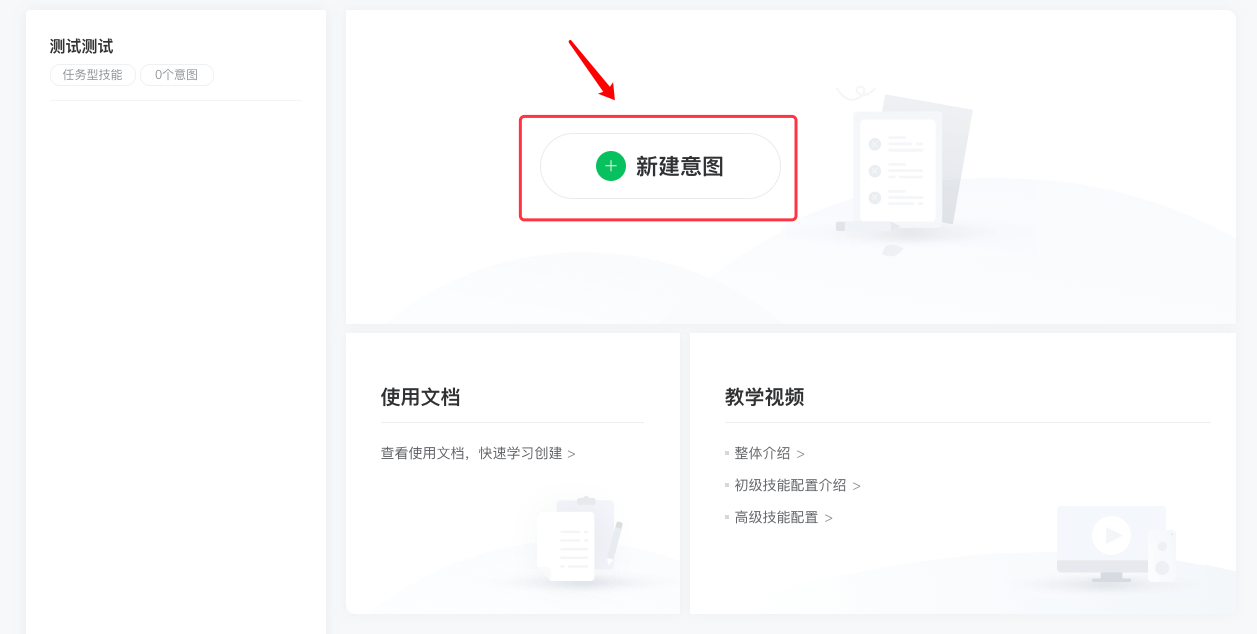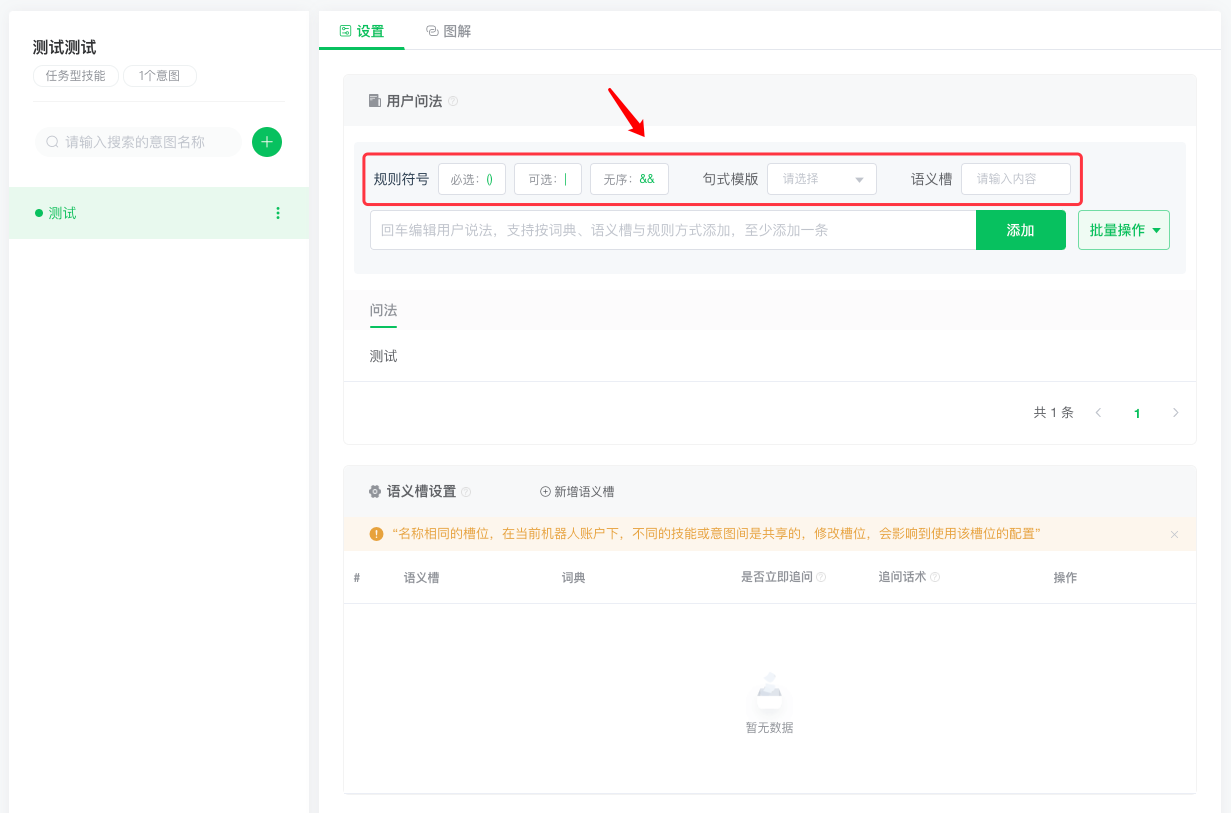# Advanced Skill Question Configuration
# intention
Intent refers to the main request or action that a user makes during a conversational interaction with a bot. Each intention corresponds to a real need of the user. A high-level skill is made up of multiple intentions.

The user question rule is a common expression of user intent. In the Advanced Skill Configuration, developers can select theSupplementary User Questions ModuleAdd user questions for intent.

There may be many different expressions of a user's intent. When configuring Q & A, developers should be able to fill in the user's questions as comprehensively as possible, covering a variety of different sentence patterns. In order to facilitate developers to quickly write user questions, the platform supports the use ofRegular symbol、dictionaryandSemantic slotTo add user questions.
For example:I'd like to check the weather in Beijing./I'd like to check the weather in Shanghai., the above two sentences can use the semantic slot {City} , merged intoI'd like to check the weather in {city}。
However,I'd like to check the weather in {city}and{City} How's the weather?Are two different sentence patterns, need to be divided into two kinds of user questions to add.
The specific rules are as follows.
# Questions with Regular Symbols
The platform supports developers to add in user questions “()”、“|The "and" three rules. Of which:
Developers can use “()” Splitting User Questions into Multiple ConditionsCondition disorder with "& &"use “|” Conditions are optional, etc.
"()": Parentheses, representing the required conditions, are ordered before and after. Must appear in pairs. Nesting is not allowed
“|” : Or, only allowed in parentheses
"& &": Connectors, Antecedent and Posterior Conditions Unordered
Note: The above symbols must be in English
For example:(open|Want to see|)&&(video)({Program Name})
Indicates that the current rule has three conditions:(open|Want to see|)、(video)、({Program Name})
among(open|Want to see|)Condition. The last “|"It is an optional condition," want to see "and" open "appear one can be (video)({Program Name})Is a mandatory condition, that is, the user asked the "video" and "{program name}" must appear to hit.
The first two conditions are unordered, i.e. “Want to see the video"Open the video.” Both can hit.
(video)({Program Name})It means that these two conditions are ordered and must appear continuously to hit, that is, "video xxx" can hit, and "xxx video" cannot hit.
# With Dictionary/The Question of Semantic Slot
# concept
SeeNoun Interpretation - Semantic SlotNoun Explanation - DictionarySubsection.
# Citation dictionary
Developers can insert a dictionary into the user's query, using a dictionary to cover the possible changes of a keyword in the sentence.
For example: "Does the mall open at 8 o'clock" and "Does the mall open at 9 o'clock?" In these two user questions, the time point is the key word that can change constantly, we can use a system dictionary Sys. specific time point Instead of all the time points the user may ask, you can write: "Is the mall sys. The specific time is open," so that the user can match any time point.
# Reference semantic slot
User queries also support referencing semantic slots, which allows developers to replace similar keywords in user queries with a semantic slot. When referencing semantic slots, developers can either use existing semantic slots in the system or add custom semantic slots according to dialog needs.
Semantic slots are wrapped in {} symbols, developers do not need to write their own, they can be added by filling in the name of the semantic slot editor.
For example, when inquiring about the lucky numbers of constellations, users of different constellations may ask: "What is the lucky number of Virgo," or "What is the lucky number of Aries," at this time we can extract the keyword of the constellation type. Replace it with a {constellation} semantic slot, merge it as "What is the lucky number of {constellation}," and associate it with a dictionary containing 12 constellations in the semantic slot setting, to meet the user's query requirements for 12 different constellations.